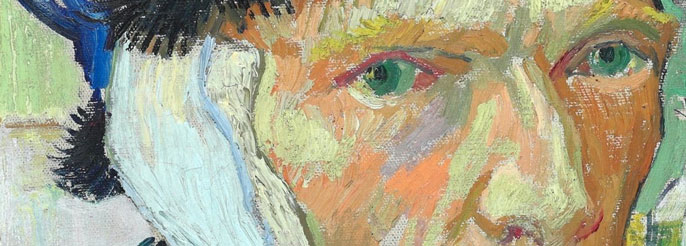According to “Lust for Life,” Irving Stone’s fictionalized biography of Vincent van Gogh, the artist “left only a tiny portion of the lobe” when he famously sliced off his ear.
Other versions differ. Stone got that detail, it turns out, from Dr. Félix Rey, acknowledged in an author’s note at the end of the bestselling 1934 novel. And it turns out that the doctor revealed this small but significant detail in a letter to Stone — including a sketch of exactly where the cut was made — that’s been housed in the archives of UC Berkeley’s Bancroft Library.
The letter, now on loan from the Bancroft, goes on display at the Van Gogh Museum in Amsterdam this Friday as part of an exhibit titled “On the Verge of Insanity.”
The story: For a book on the Dutch master’s mutilated ear, British author Bernadette Murphy needed to clear up confusion about the extent of the damage the artist inflicted on himself in 1888. So she rang up the Bancroft, which held Stone’s archives.
Library assistant David Kessler searched through an uncataloged box devoted to “Lust for Life,” and finally retrieved a signed letter from Van Gogh’s doctor with a sketch of his left ear detailing the self-mutilation, which attested to the fact that the artist removed all but the earlobe.
That tale and more are now revealed in the newly published book “Van Gogh’s Ear: The True Story” (Chatto & Windus, London), which was discussed today at a press conference at the museum. The letter is also the centerpiece of a new PBS documentary on the artist that will premiere later this month, and which is based on Murphy’s book.
David Faulds, now the Bancroft Library curator of rare books and literary manuscripts, delivered the letter, written and signed by Dr. Rey on Aug. 18, 1930, to the museum, and appeared at a book-release press conference earlier today.
“This investigation has been an incredible adventure and discovering the document was an extraordinary moment,” Murphy said. “From my little house in Provence I couldn’t believe I had found something new and important about Vincent van Gogh, but it was a vital detail in my complete re-examination of this most famous of artists, the key people he met in Arles and his tragic end.”


